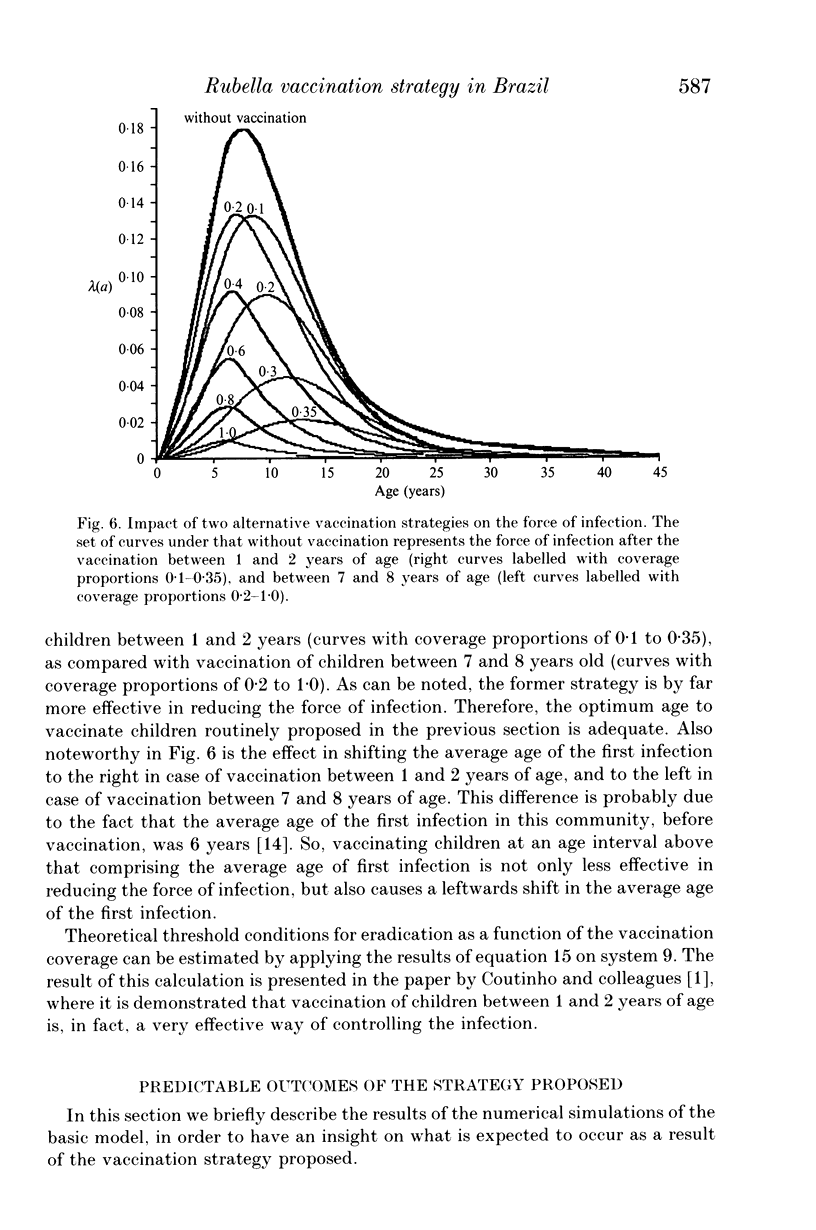Abstract
A mixed vaccination strategy against rubella is proposed. We describe how the vaccination strategy was designed with the help of mathematical techniques. The strategy was designed for application in a non-immunized community of the State of São Paulo, Brazil, and was implemented by local health authorities in 1992. This strategy comprises a pulse vaccination campaign, covering the age interval between 1 and 10 years, followed by the introduction of the vaccine in the immunization calendar at 15 months of age. The expected impact of the proposed strategy is discussed.
Full text
PDF















Selected References
These references are in PubMed. This may not be the complete list of references from this article.
- Anderson R. M., May R. M. Age-related changes in the rate of disease transmission: implications for the design of vaccination programmes. J Hyg (Lond) 1985 Jun;94(3):365–436. doi: 10.1017/s002217240006160x. [DOI] [PMC free article] [PubMed] [Google Scholar]
- Anderson R. M., May R. M. Directly transmitted infections diseases: control by vaccination. Science. 1982 Feb 26;215(4536):1053–1060. doi: 10.1126/science.7063839. [DOI] [PubMed] [Google Scholar]
- Anderson R. M., May R. M. Vaccination against rubella and measles: quantitative investigations of different policies. J Hyg (Lond) 1983 Apr;90(2):259–325. doi: 10.1017/s002217240002893x. [DOI] [PMC free article] [PubMed] [Google Scholar]
- Coutinho F. A., Massad E., Burattini M. N., Yang H. M., de Azevedo Neto R. S. Effects of vaccination programmes on transmission rates of infections and related threshold conditions for control. IMA J Math Appl Med Biol. 1993;10(3):187–206. doi: 10.1093/imammb/10.3.187. [DOI] [PubMed] [Google Scholar]
- Grenfell B. T., Anderson R. M. The estimation of age-related rates of infection from case notifications and serological data. J Hyg (Lond) 1985 Oct;95(2):419–436. doi: 10.1017/s0022172400062859. [DOI] [PMC free article] [PubMed] [Google Scholar]
- Pannuti C. S., Moraes J. C., Souza V. A., Camargo M. C., Hidalgo N. T. Measles antibody prevalence after mass immunization in São Paulo, Brazil. Bull World Health Organ. 1991;69(5):557–560. [PMC free article] [PubMed] [Google Scholar]
- Thacker S. B., Millar J. D. Mathematical modeling and attempts to eliminate measles: a tribute to the late Professor George Macdonald. Am J Epidemiol. 1991 Mar 15;133(6):517–525. doi: 10.1093/oxfordjournals.aje.a115923. [DOI] [PubMed] [Google Scholar]


